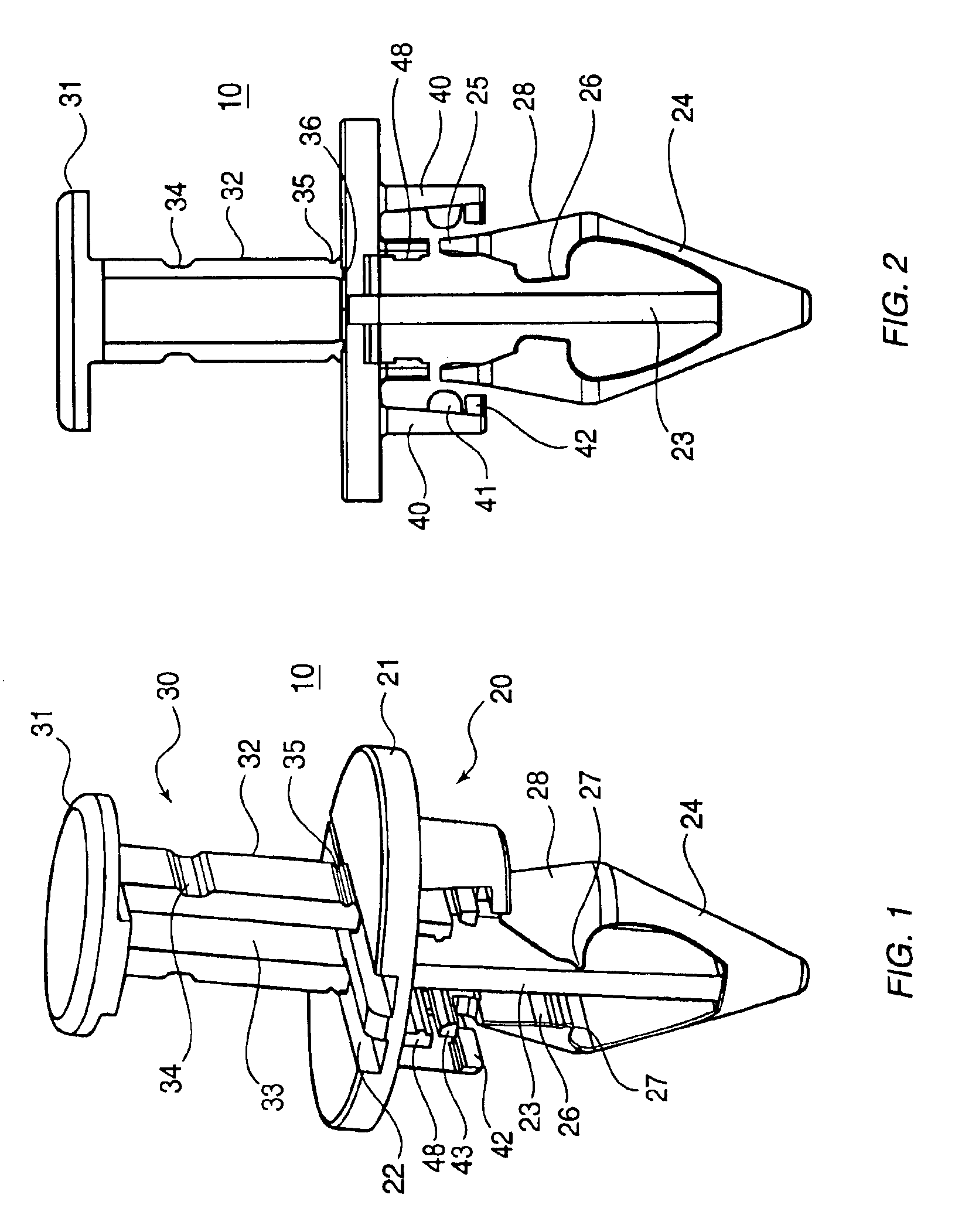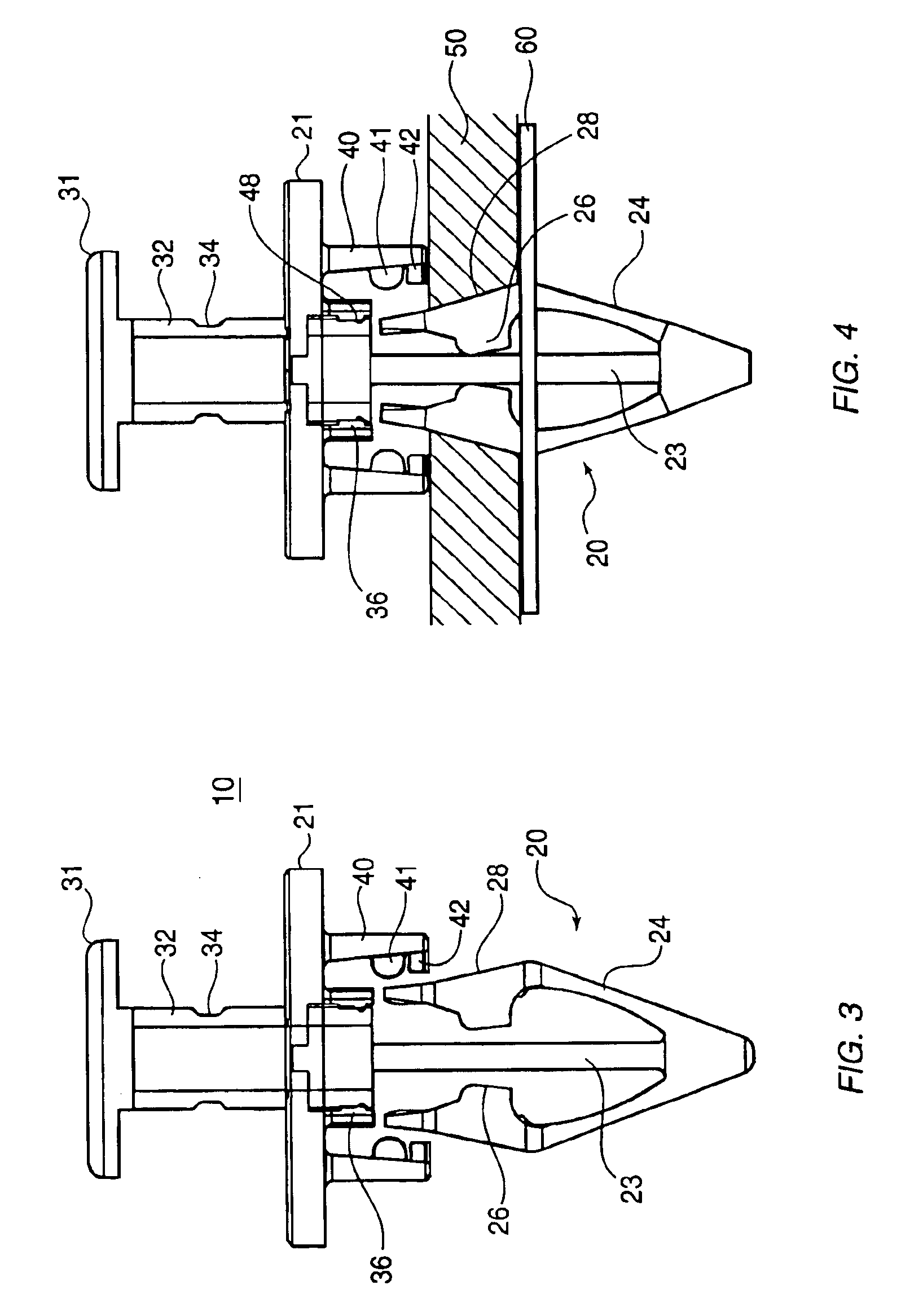Fastener
a technology of fasteners and pins, which is applied in the field of fasteners, can solve the problems of large amount of force, difficult installation, and difficulty in insertion of parallel legs into small apertures, and achieve the effects of simple insertion of pins into apertures in items to be fastened, no force, and extra flexibility
- Summary
- Abstract
- Description
- Claims
- Application Information
AI Technical Summary
Benefits of technology
Problems solved by technology
Method used
Image
Examples
Embodiment Construction
[0029]Referring now in detail to the drawings, FIGS. 1-6 show the fastener 10 according to the invention as it goes from an initially molded state (FIG. 1) into a fully locked position (FIG. 6) FIGS. 1 and 2 show the fastener 10 according to the invention in an initial molded state. Fastener 10 comprises an anchor 20 and a push pin assembly 30. Anchor 20 has a top plate 21 connected to a central leg 23. Central leg 23 extends substantially perpendicular to the bottom surface of top plate 21. There are two flexible anchor arms 24 connected to the free end of central leg 23. Each anchor arm 24 extends up and away from central leg 23, and each anchor arm 24 has a free end 25 that is not connected to anything. Anchor arm 24 has a tapered top portion 28 that widens as arm 24 extends from its free end 25 back toward the tip of central leg 23, creating a slanted wall facing central leg 23.
[0030]Push pin assembly 30 comprises a push button 31 and a pin 32 connected to and extending downward...
PUM
 Login to View More
Login to View More Abstract
Description
Claims
Application Information
 Login to View More
Login to View More - R&D
- Intellectual Property
- Life Sciences
- Materials
- Tech Scout
- Unparalleled Data Quality
- Higher Quality Content
- 60% Fewer Hallucinations
Browse by: Latest US Patents, China's latest patents, Technical Efficacy Thesaurus, Application Domain, Technology Topic, Popular Technical Reports.
© 2025 PatSnap. All rights reserved.Legal|Privacy policy|Modern Slavery Act Transparency Statement|Sitemap|About US| Contact US: help@patsnap.com



